Invisible Auto Sacramental: A Sonic Representation from Val del Omar. Museo Reina Sofía, Madrid
A piece by Niño de Elche, Lluís Alexandre Casanovas Blanco and Miguel Álvarez-Fernández
Architect: Lluís Alexandre Casanovas Blanco
Structural Engineering: Jorge López Hidalgo
Collaborators: Matteo Caro, Luis Lecea, Mireia Gallego, Irene Domínguez

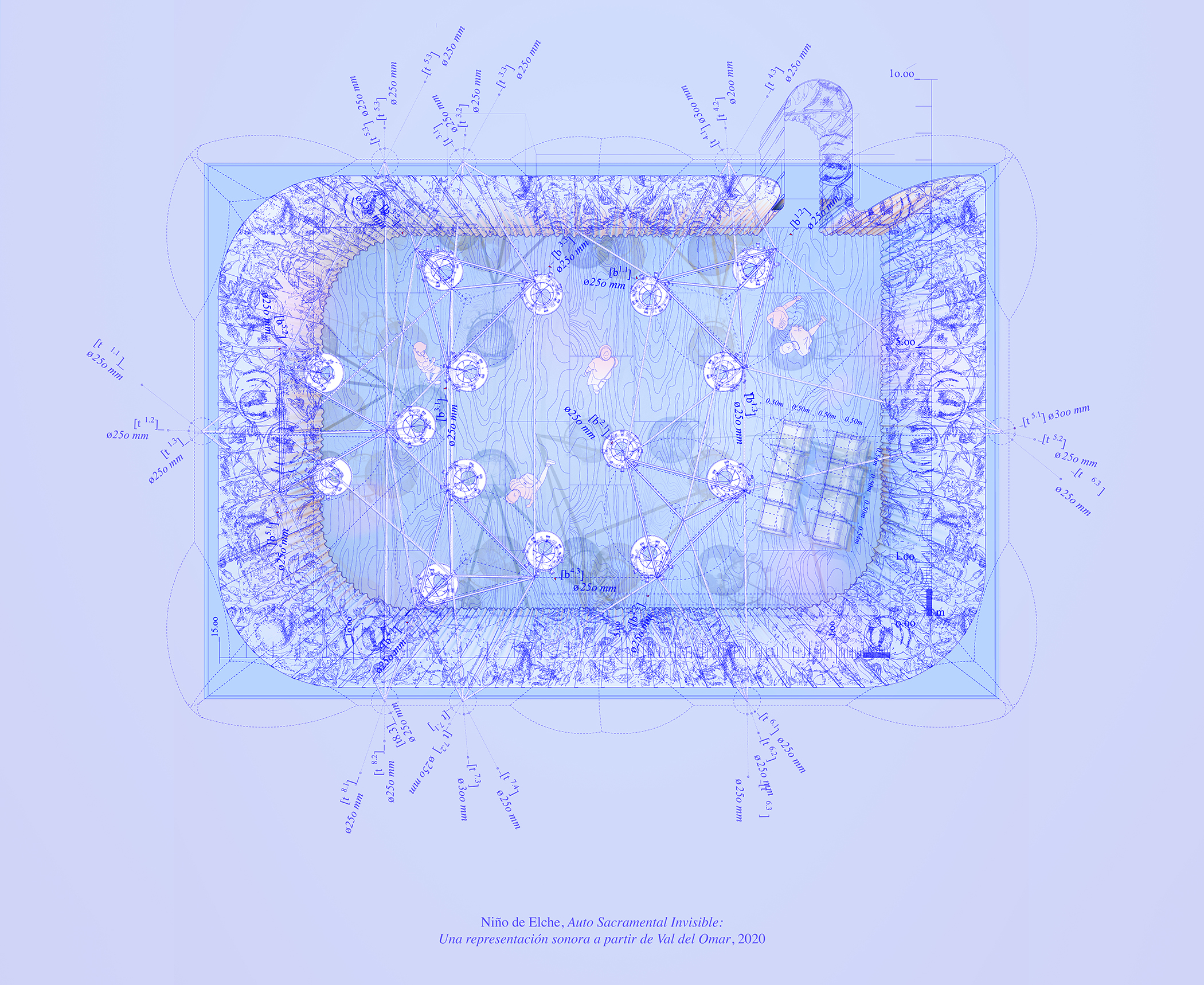
Filmmaker José Val del Omar (Granada, 1904 - Madrid, 1982) began to work on the sound piece Invisible Auto Sacramental in 1949. The work was conceived as a sound installation, a spatial artifact especially designed for a script that distributed sound (either in the form of voices, music, or noise) through a total of fourteen speakers. This proposal anticipated some of the aesthetic ideas that, during the 1960s, led to the coining of the expression “sound art.” As part of a team conformed by flamenco artist Niño de Elche and music composer Miguel Álvarez–Fernández, we have reenacted the partial presentation that took place of this work within the auditorium of the Instituto de Cultura Hispánica in Madrid in 1952. The show Invisible Auto Sacramental. A sound representation based on Val del Omar synthesizes theatrical, musical and installation components. The performance proposed by Niño de Elche revisits the original screenplay through a plurality of voices oriented simultaneously to its original context, 1952’s Spain, as well as the contemporary reenactment of this work at the Reina Sofía Museum in 2020-21.
In Niño de Elche’s piece, phantasmagorical sounds move across the vestiges of an almost-dark auditorium. This set design approaches different historical moments simultaneously. On the one hand, it recreates the presentation of the Auto at the Instituto de Cultura Hispánica in May 1952. On the other, the space appeals in a more abstract way to the techno-ritual—or “mechanical-mystical”—imagery developed by Val del Omar in the 1940s and 1950s, an imagery at times attuned to, at others in complicity with, the reactionary official culture of the time.
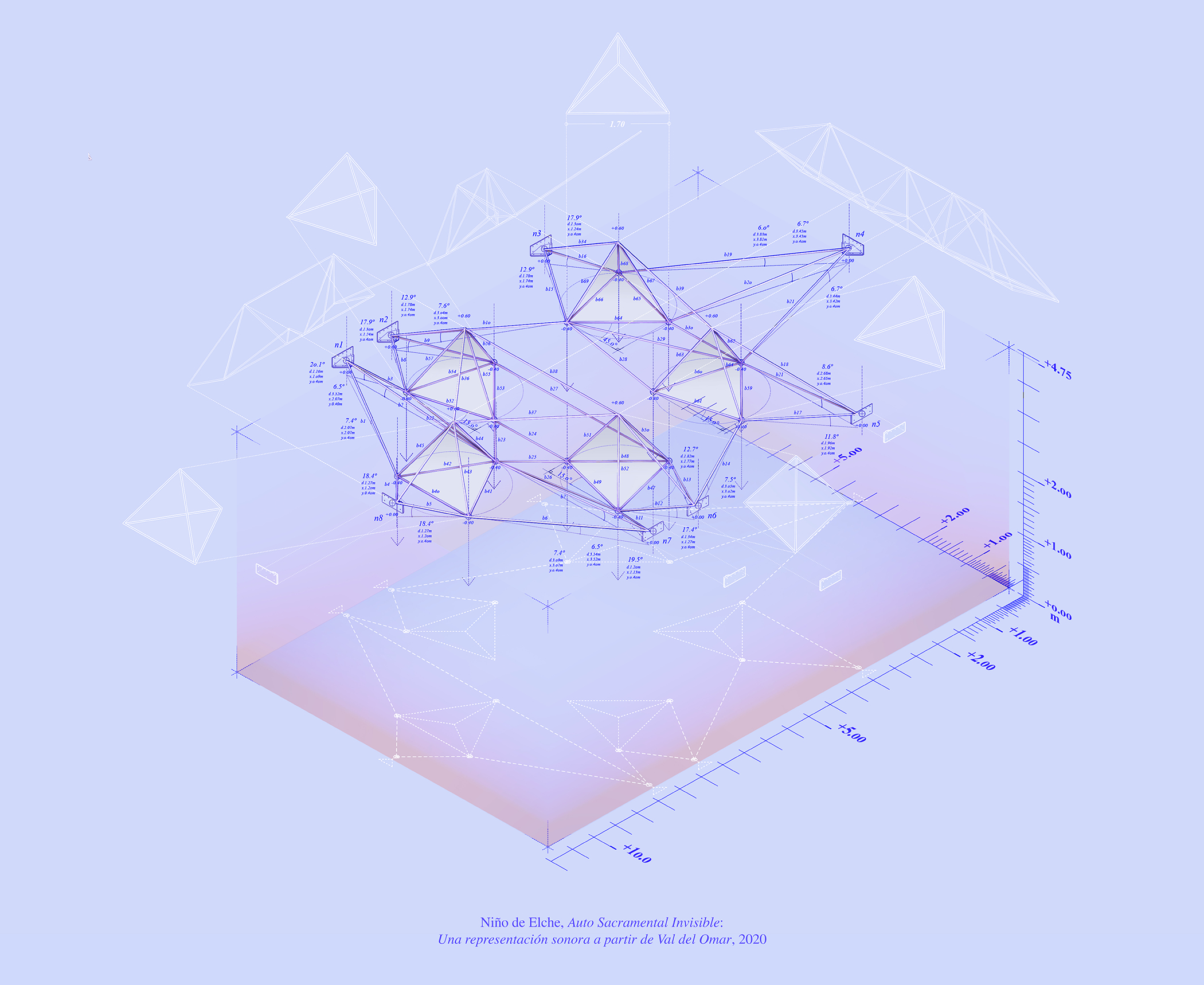
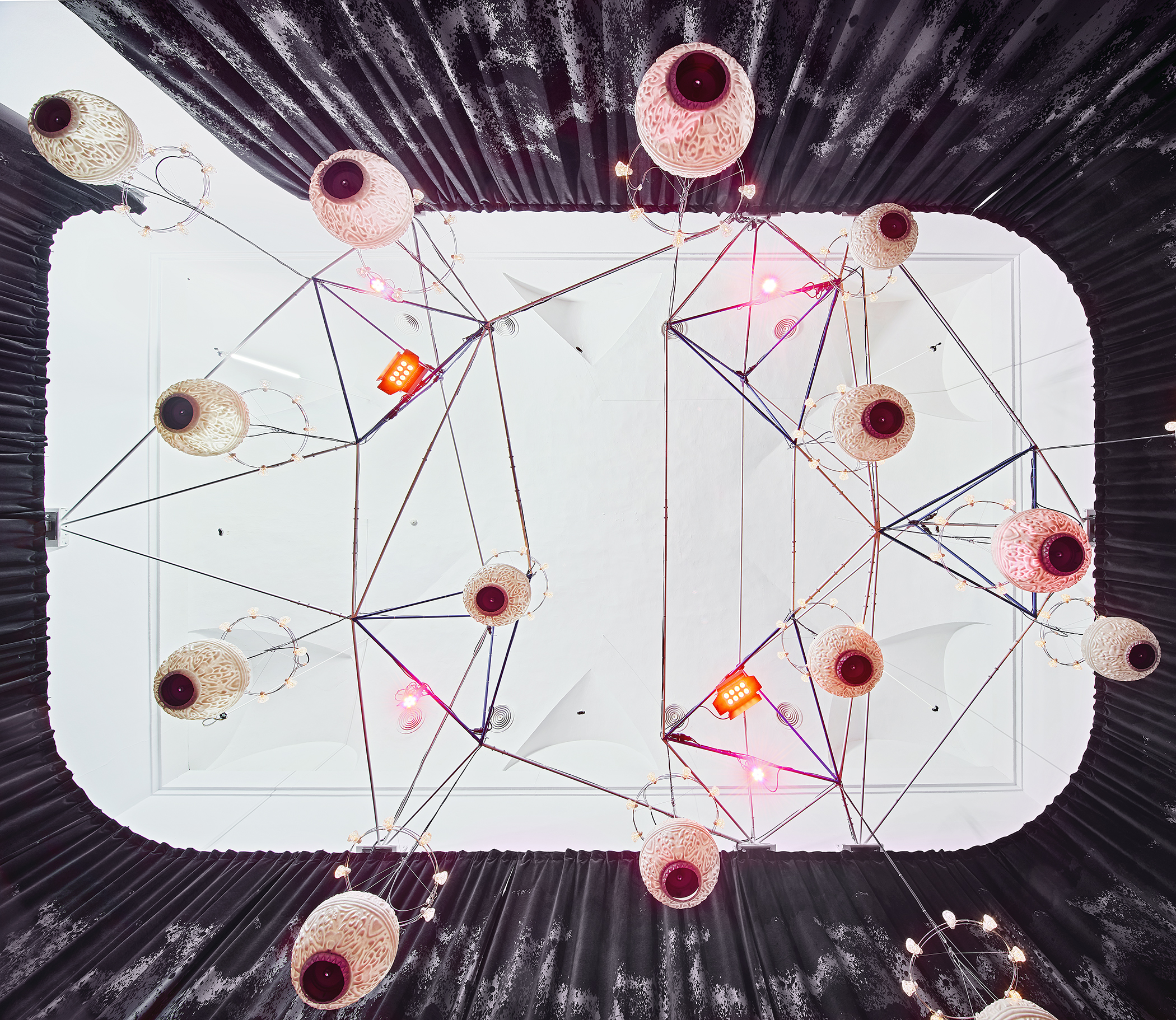
Upon entering the installation, the visitor will see a wire structure outlined against the characteristic vaulting of the Sabatini Building. It contains tangles of cables, spotlights, and light bulbs plugged into power strips and sockets. Hanging from this infrastructure are fourteen loudspeakers whose horns point challengingly at the visitor, as did the militarized loudspeakers of the radio program La Voz del Frente or the Circuito Perifónico during and after the Spanish Civil War. Embellished with fairground lights typical, as the critic Juan Eduardo Cirlot pointed out, of entertainment in postwar Spain, the loudspeakers become votive lamps. This assembly of electrical, audio, and lighting components refers back to the places where Val del Omar worked at different times in his career, each one halfway between a scientific laboratory and a mechanical workshop. In the context of the avant-garde movements, facilities of this kind not only became spaces for artistic experimentation but also places for imagining the psycho-physiological transformation of the spectator. It is no wonder that the journalist Luis T. Melgar compared one of these laboratories to the “cabinet of Doctor Caligari.”
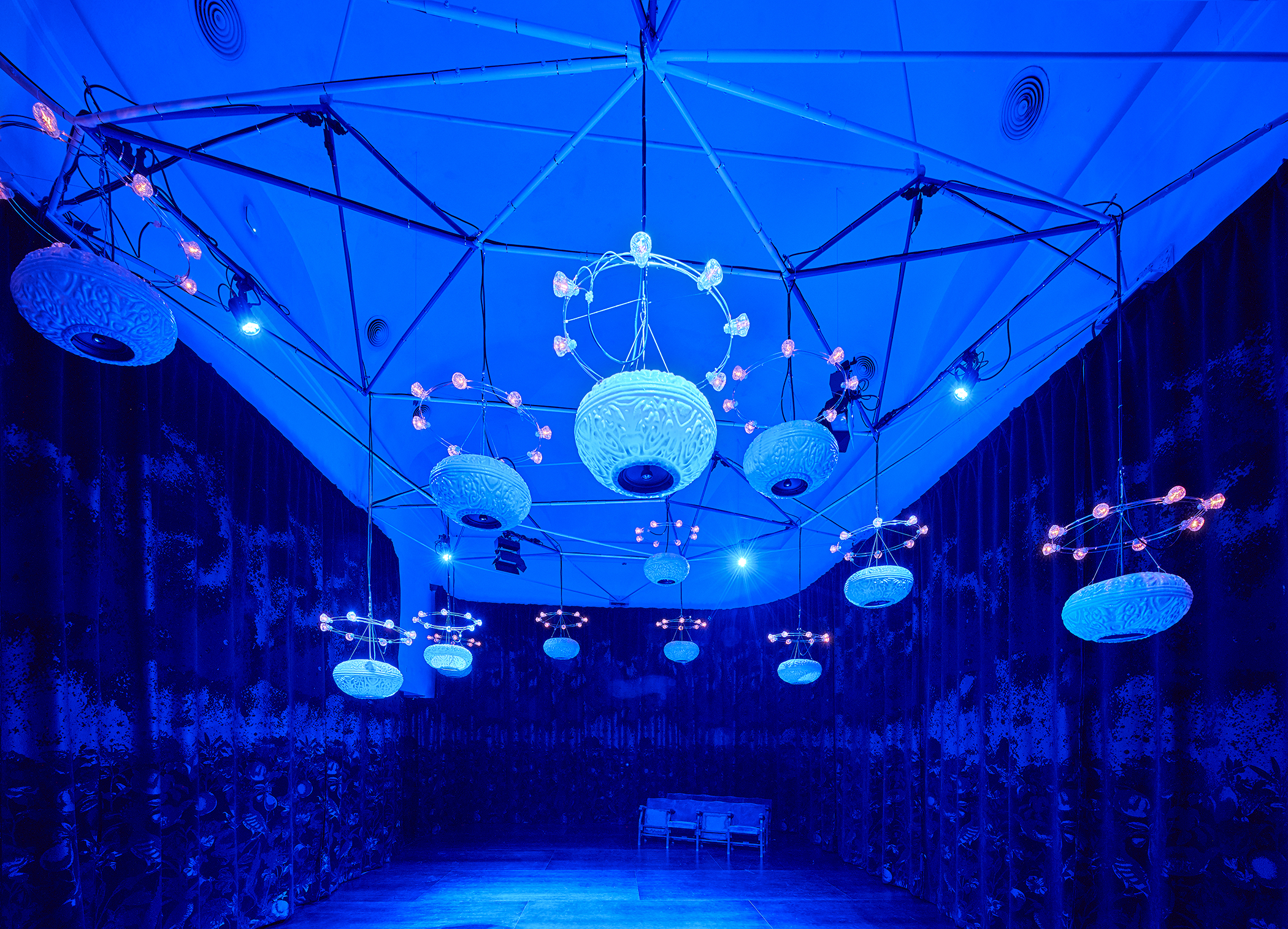
Invisible Auto Sacramental. Espacio 1, Museo Nacional Reina Sofía, Madrid. Photo by José Hevia
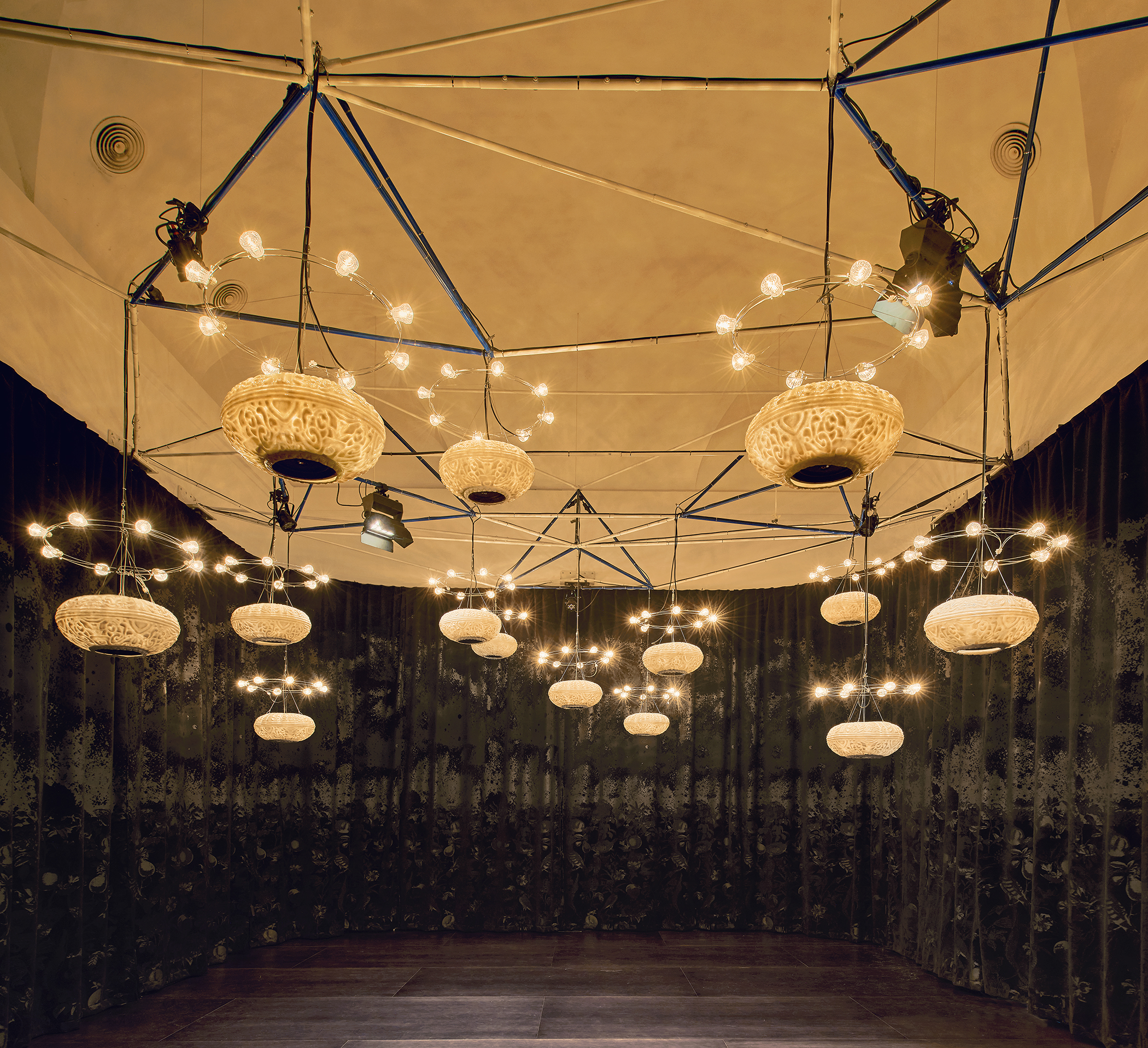
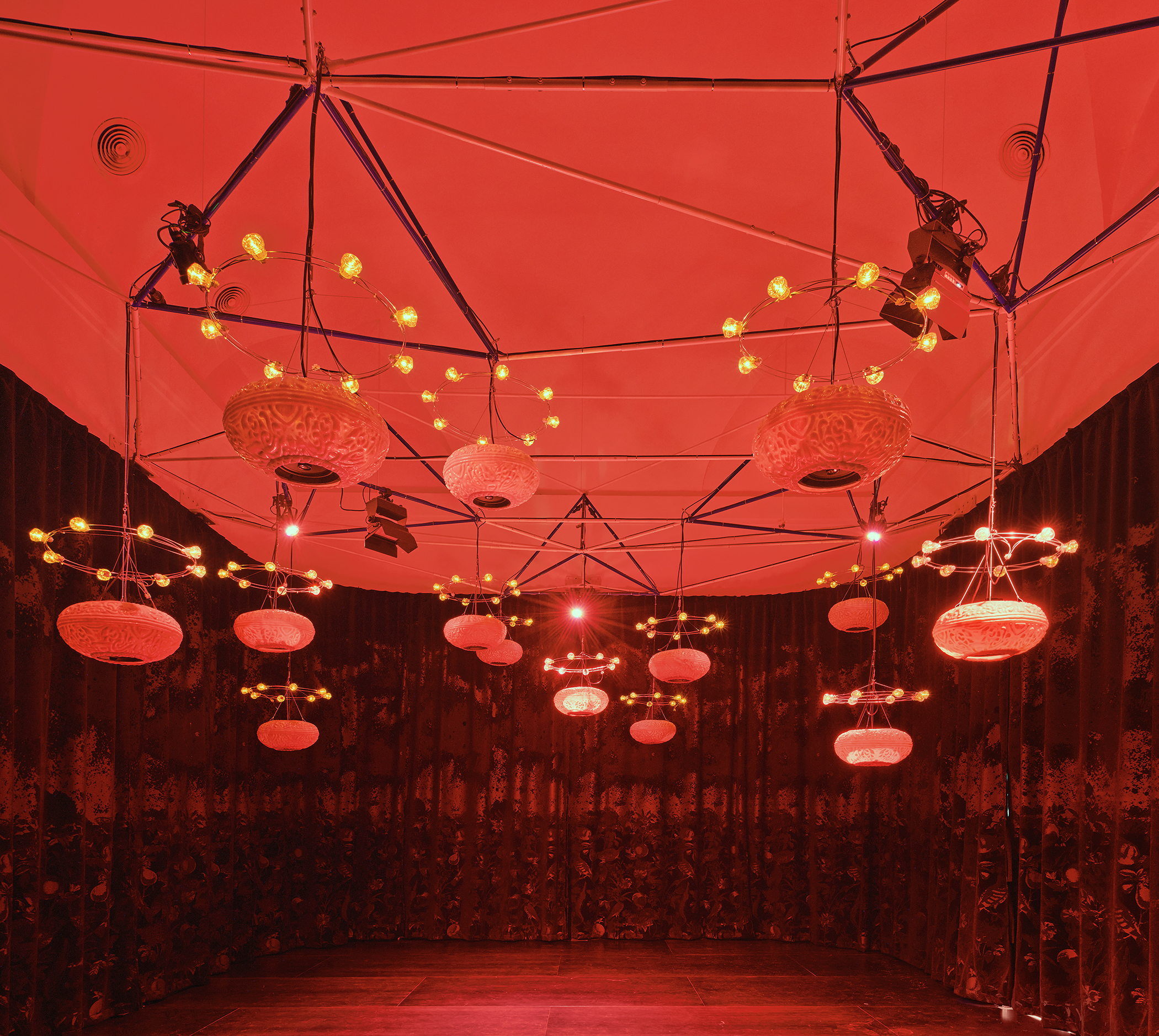
The perimeter of the space is covered by a stage curtain similar to the one installed to improve the acoustics of the auditorium at the Instituto de Cultura Hispánica. Created especially for Niño de Elche’s sound installation, this curtain features a pattern whose legibility varies according to the movement, perspective, and attention of the viewer. Its design illustrates the life/death dialectic present in the Auto by using some of the imagery Val del Omar describes in his scripts. On the one hand, the curtain starts with an allusion to the species that inhabit the Generalife in Granada, obsessively pictured by Val del Omar in many of his films. As it rises, this “natural history” of the Alhambra dissolves into abstract textures that allude to another of the Auto’s concerns. The textures at the top of the curtain come from high-speed photographs taken by the Los Alamos National Laboratory milliseconds before the first nuclear tests were carried out in the desert of New Mexico in 1945. These images represent the threatened destruction of this “natural history” by the development of atomic energy after World War II. For Val del Omar, the new advances in nuclear science meant a paradigm change destined to revolutionize thought and aesthetics. As he wrote in 1952, “it is about time this incipient nuclear technology afforded us with a broad physical base for our thinking, provided us with an expansive reasoning.” The Auto inaugurates the research that seeks to identify the right aesthetic for this new era. In Niño de Elche’s installation, the curtain acquires an ambivalent significance. On the one hand, the overall effect recalls the tapestries, thick drapes, and murals that were favored by Franco’s regime in some of its first official interior designs, where they were used for their decidedly anti-modern character. On the other hand, we must not forget that the use of such drapery in the 1940s and 1950s, when many venues were converted into cinemas, was a response to acoustic requirements determined by the modern functionalist architectural discourse.
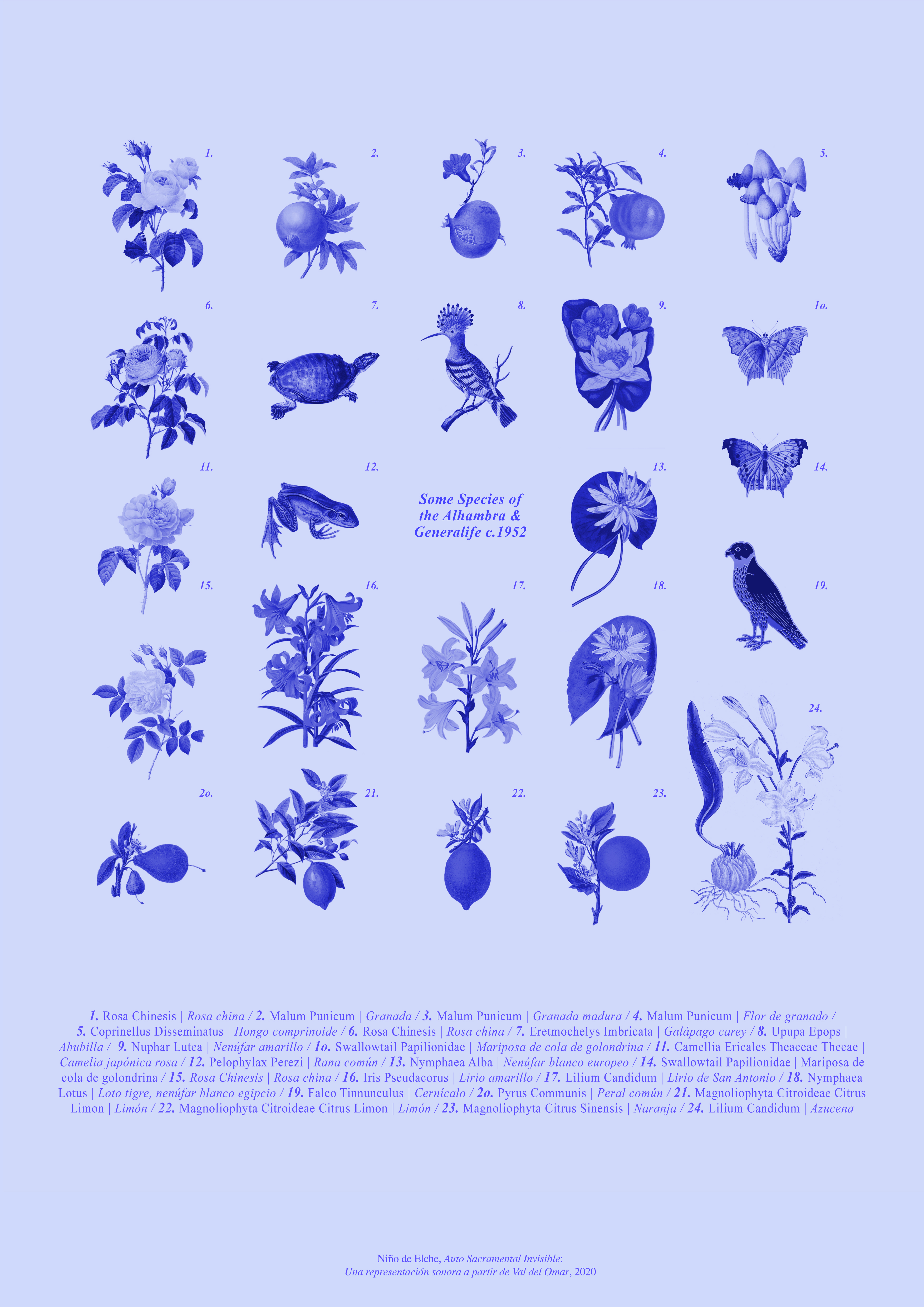
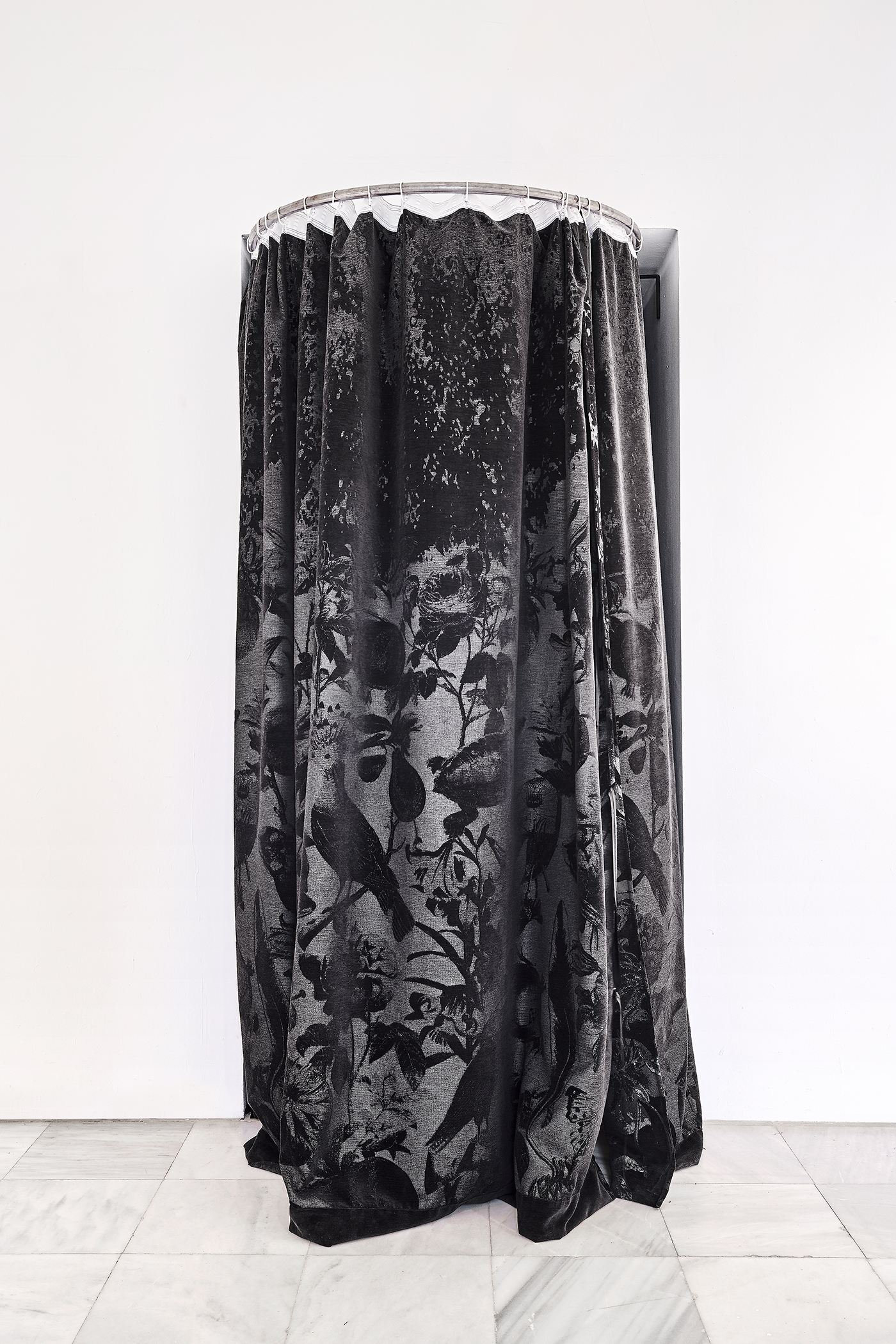
Detail of the entrance. Contextualization Room. Photos by José Hevia.
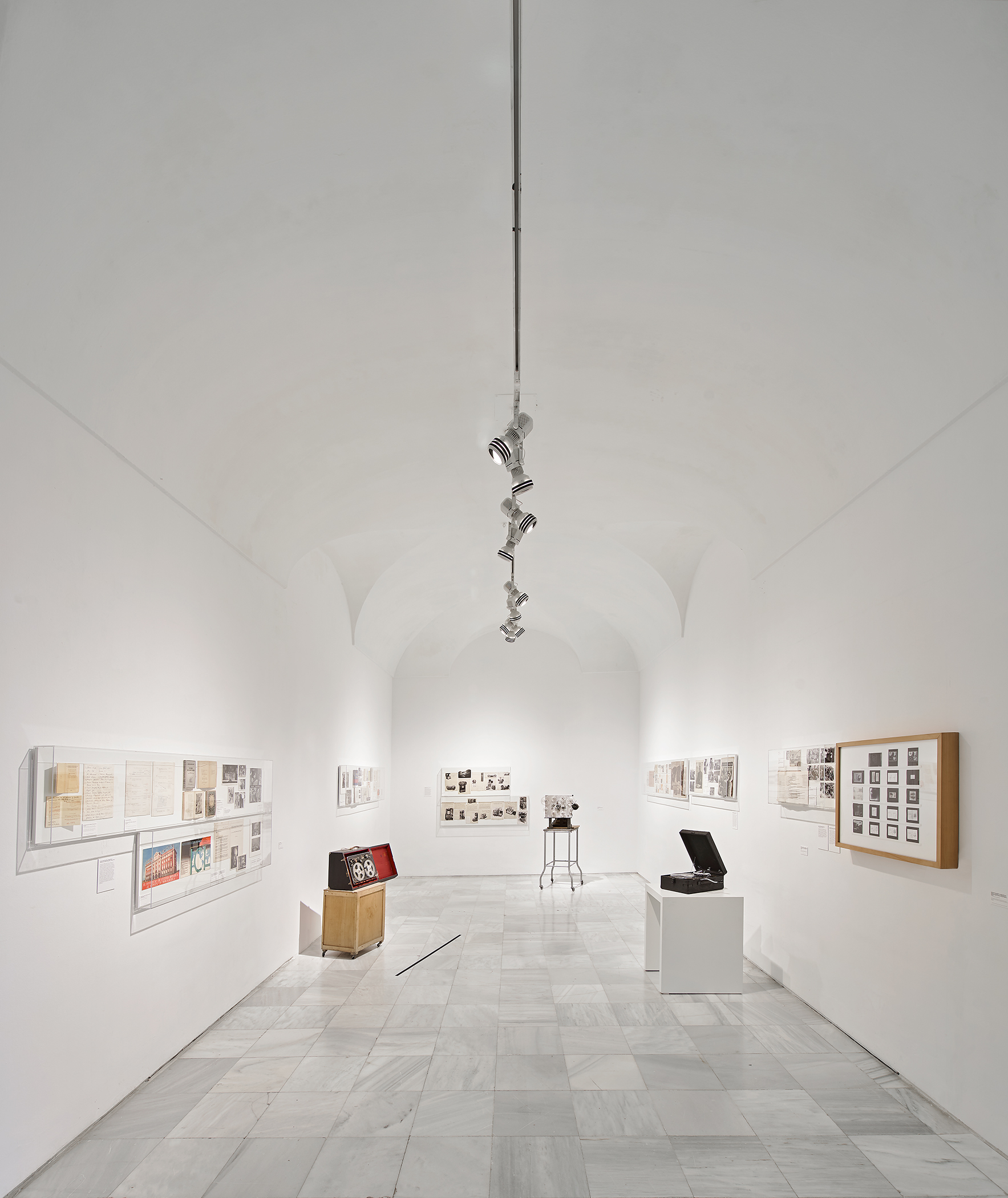
Contextualization room.
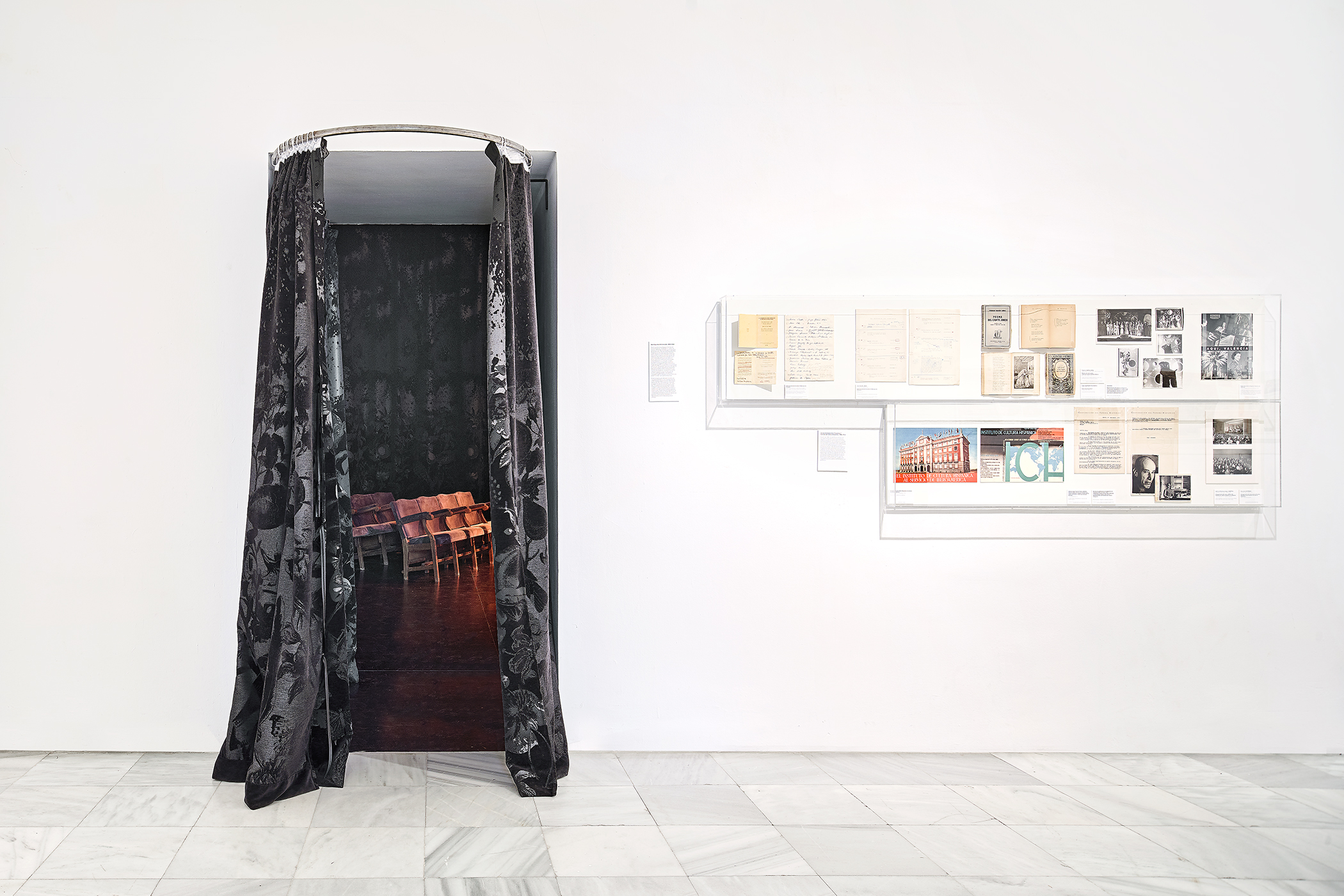
Detail of the entrance. Contextualization room.
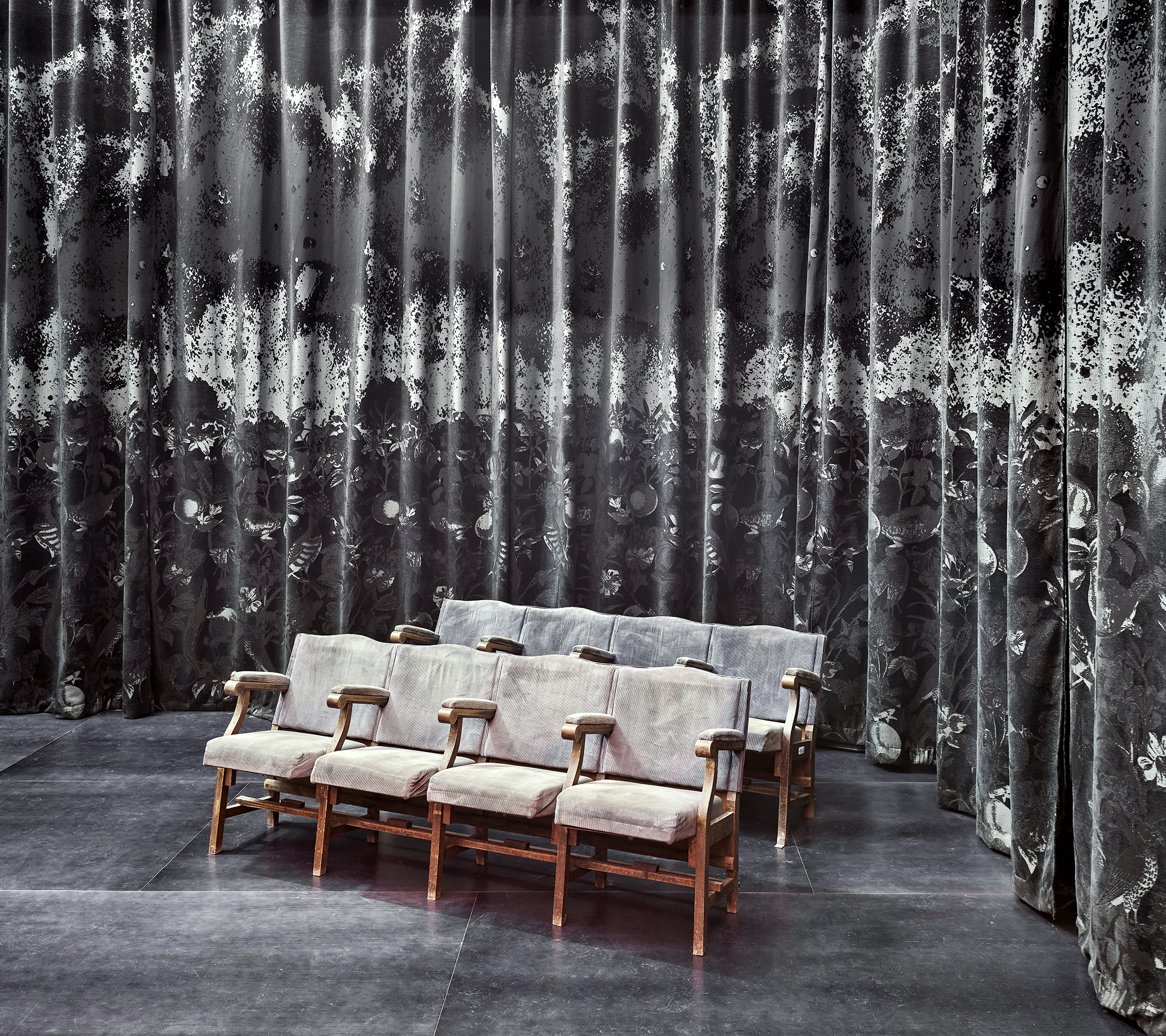
Detail of the seating area. Installation.
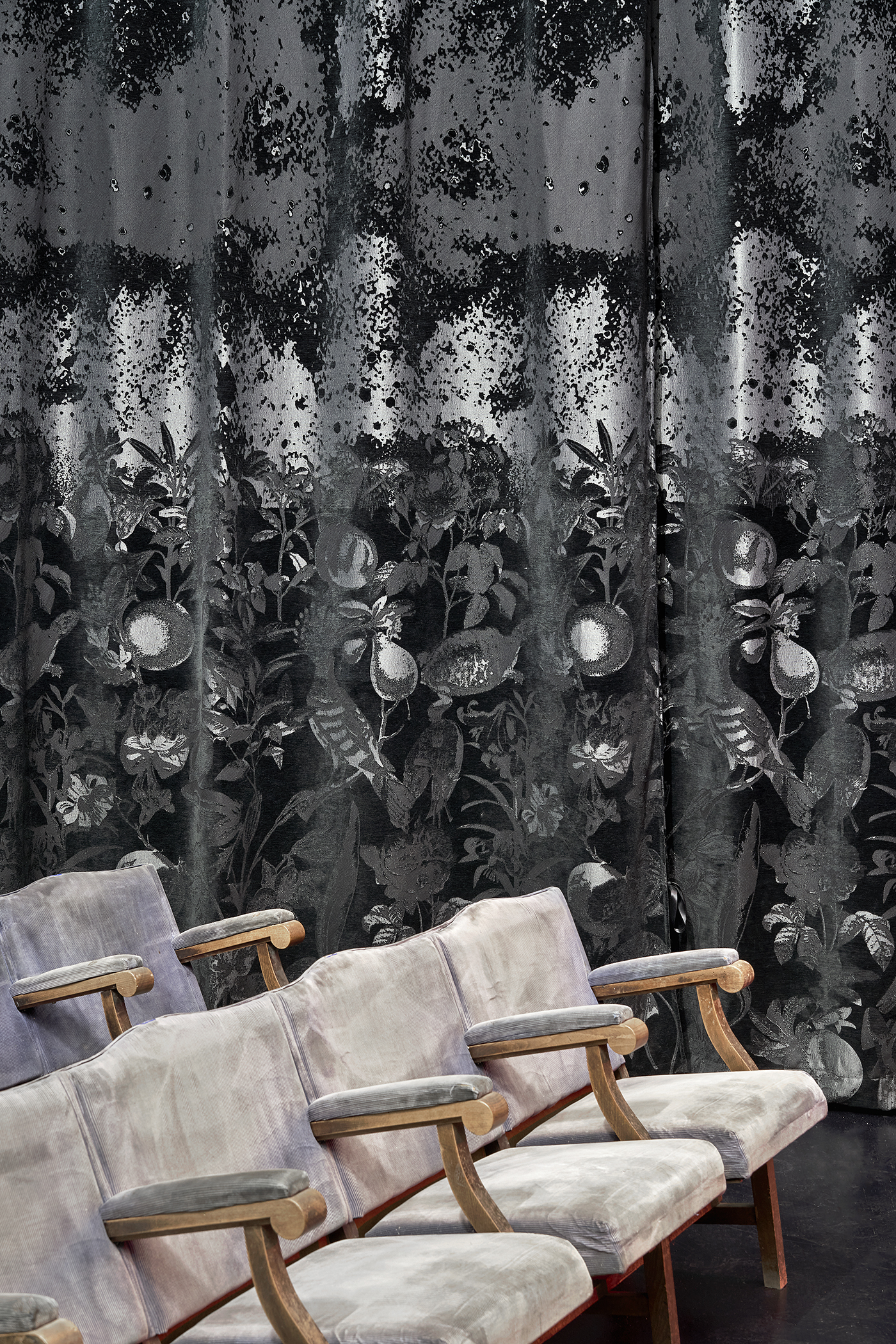
Detail of the curtain. Installation.
Ultimately, the scenography of Niño de Elche’s piece explores spatially the different tensions present in Val del Omar’s work—the dichotomies of modernity/anti-modernity, control/ emancipation, power/counter-power, official culture/popular culture—while reviewing their relevance in the context of today’s challenges to the globalization of culture. With his sound performance based on Val del Omar, Niño de Elche not only offers the visitor a first encounter with this artist’s little known audio production but also, as in his previous work, lays bare the political implications of what we listen to and how we listen to it.
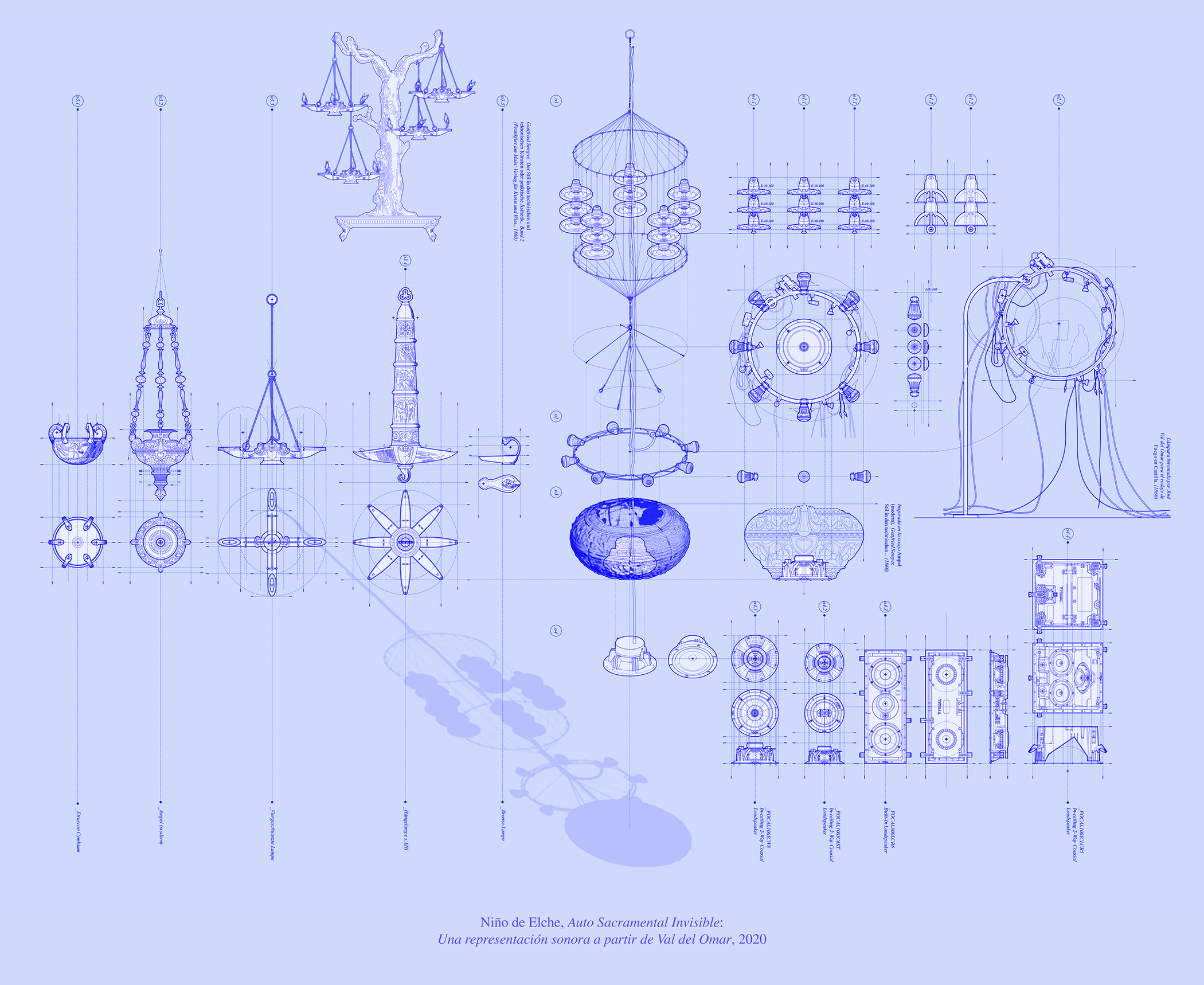

Photo by José Hevia
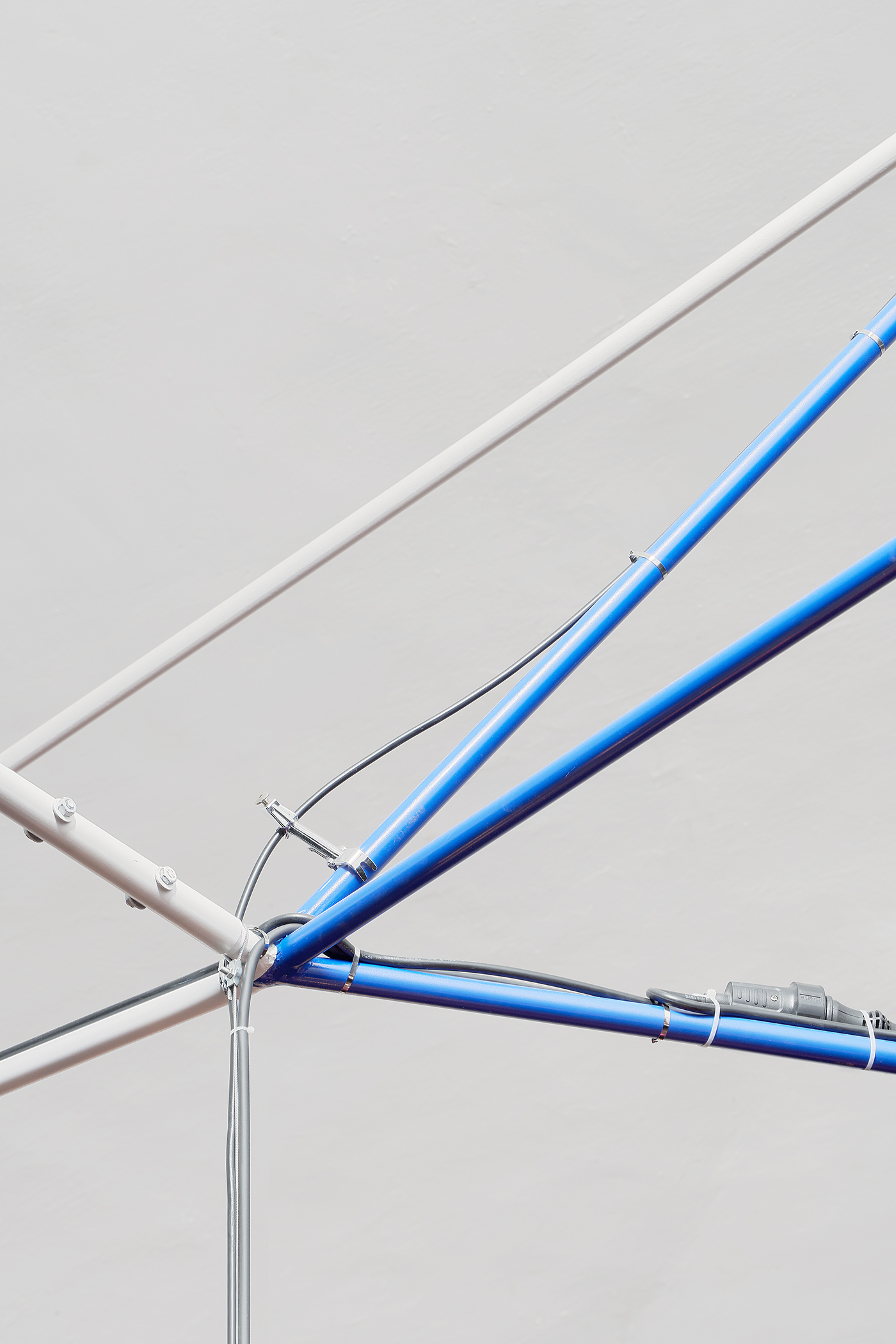
Photo by José Hevia
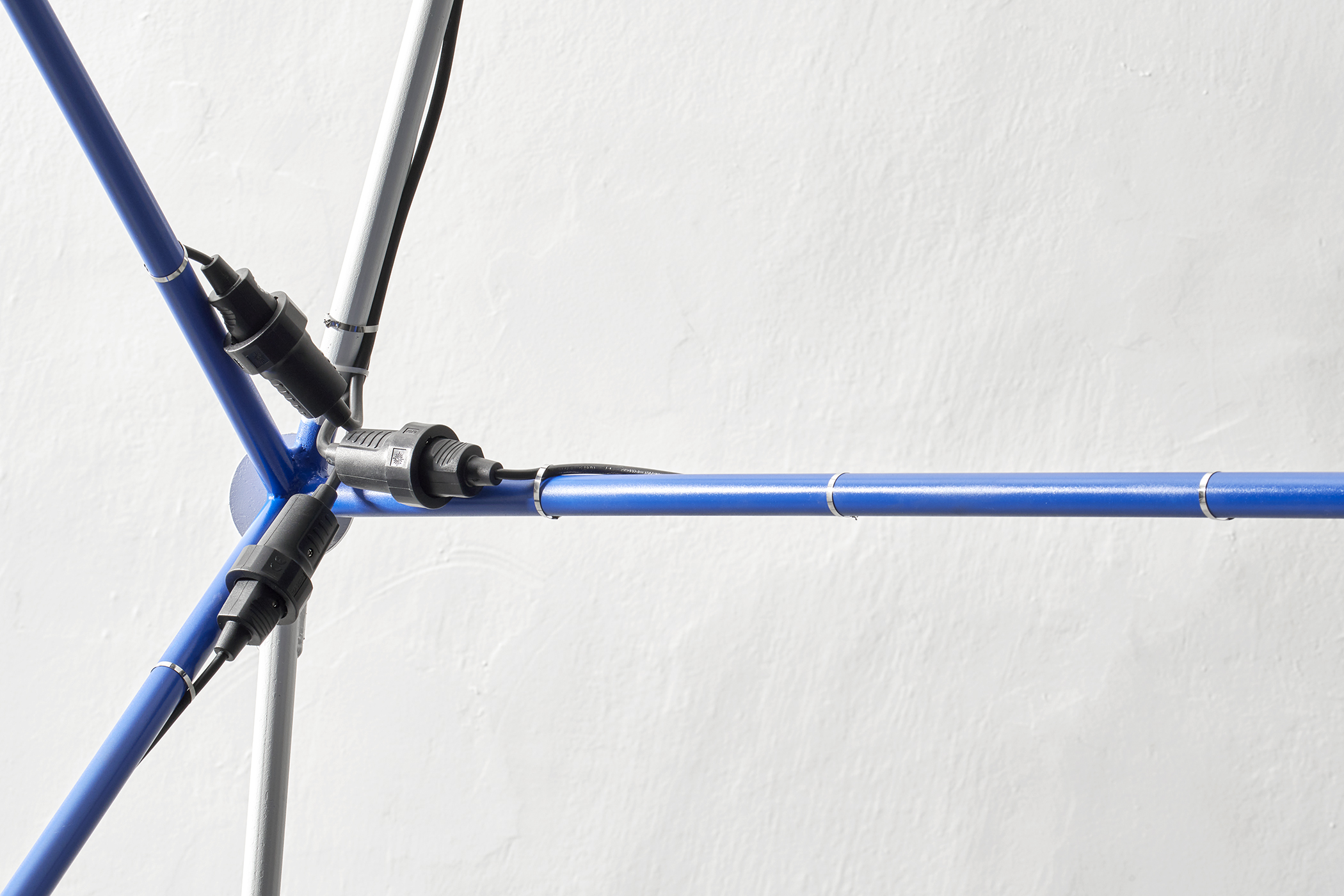
Photo by José Hevia